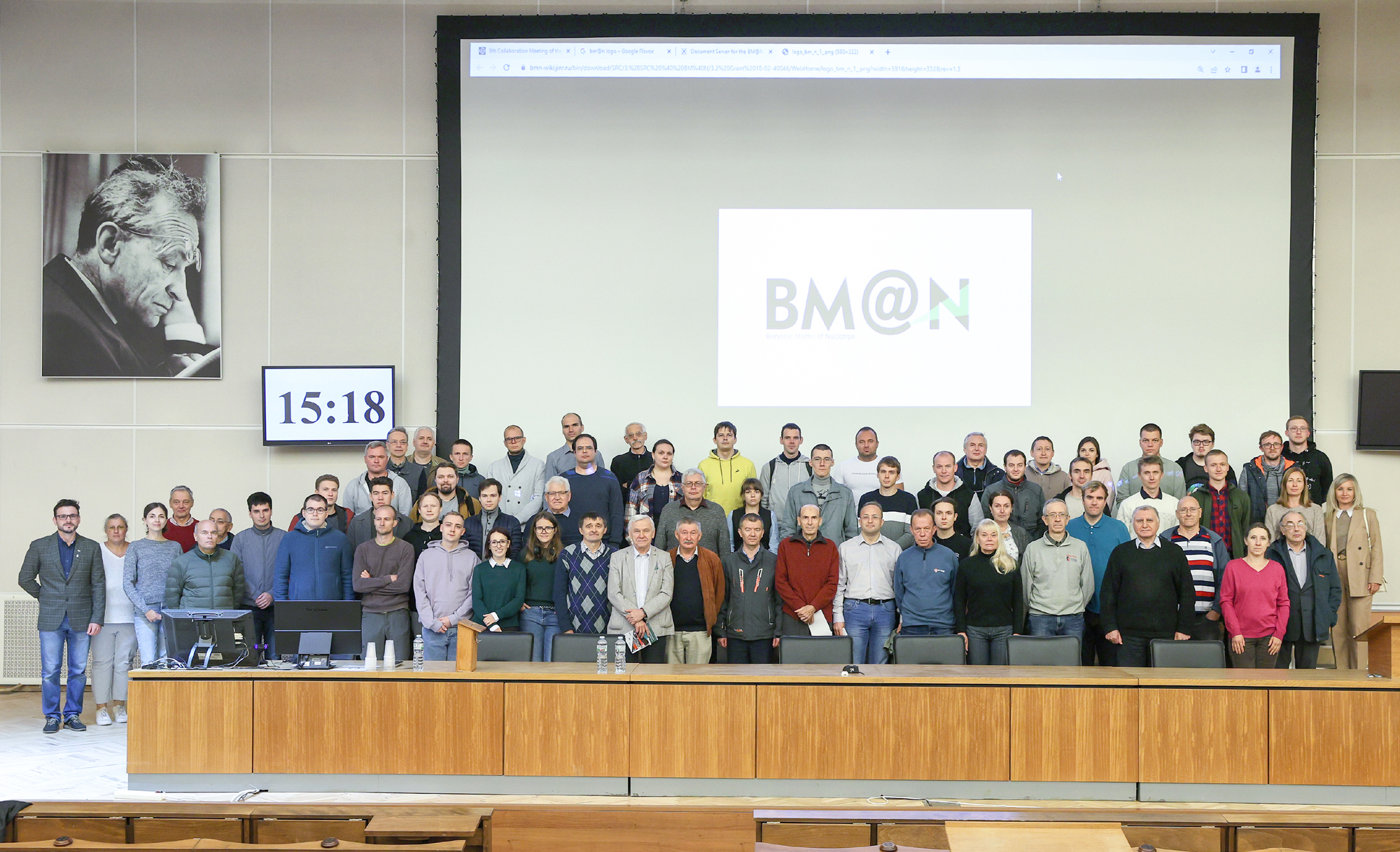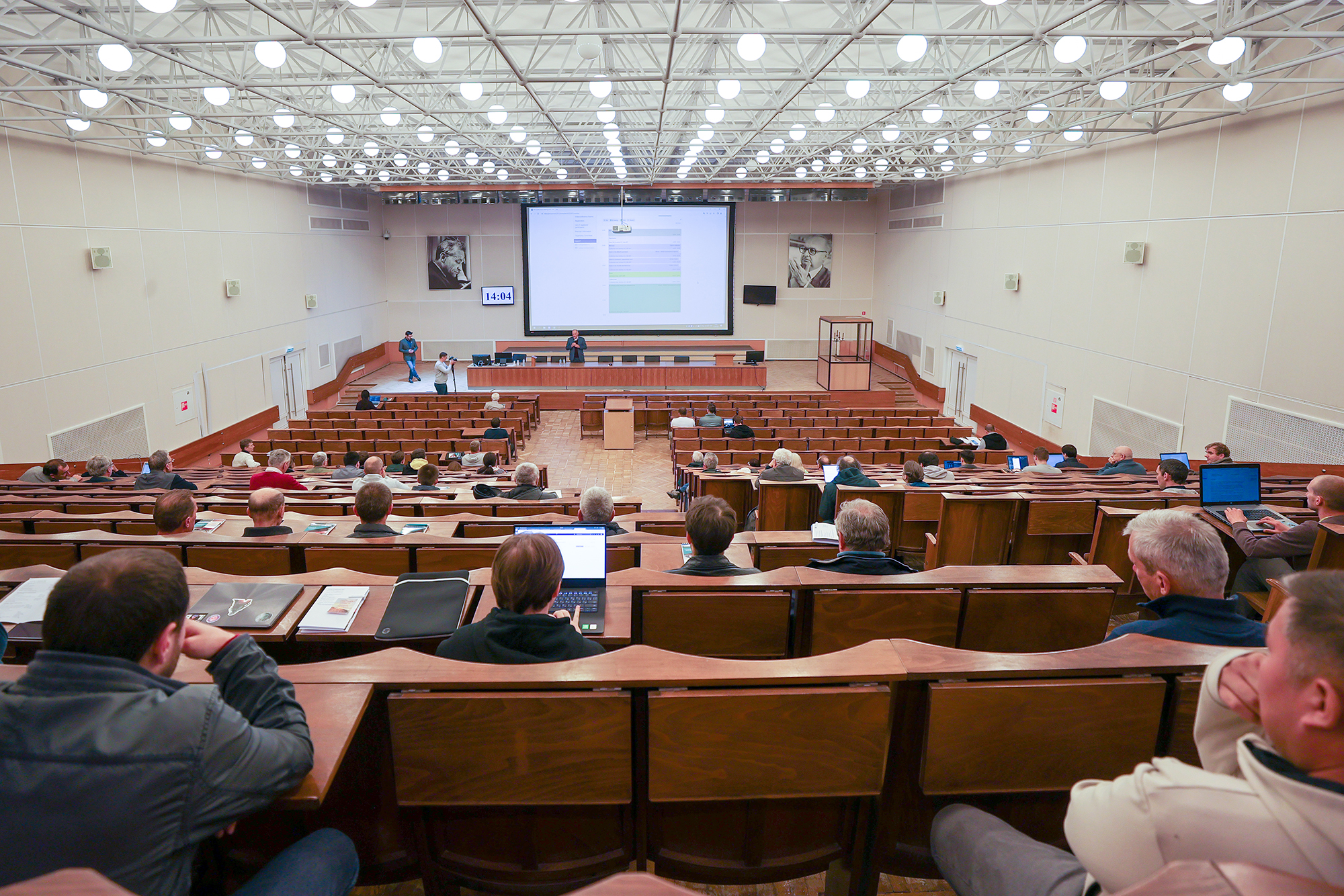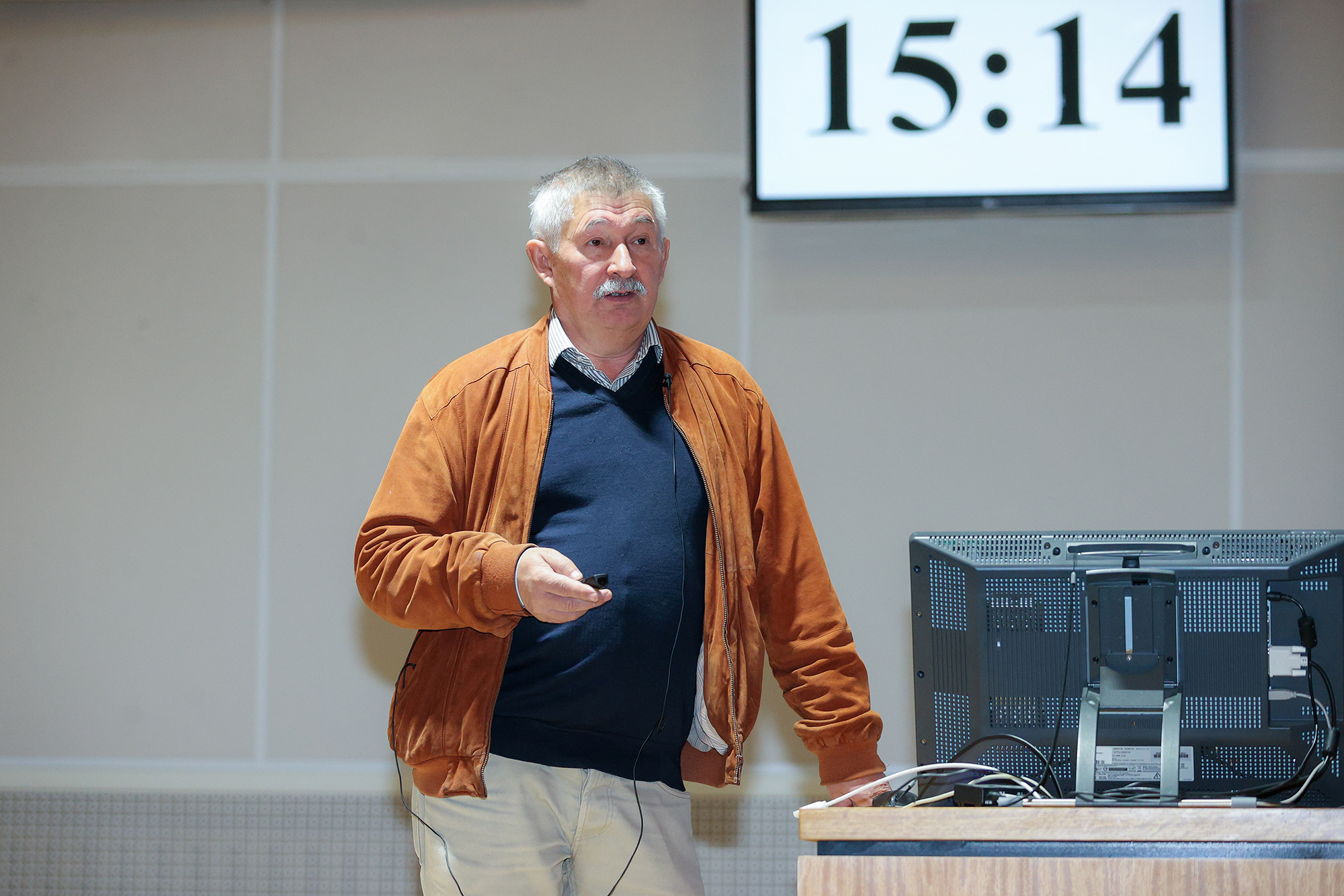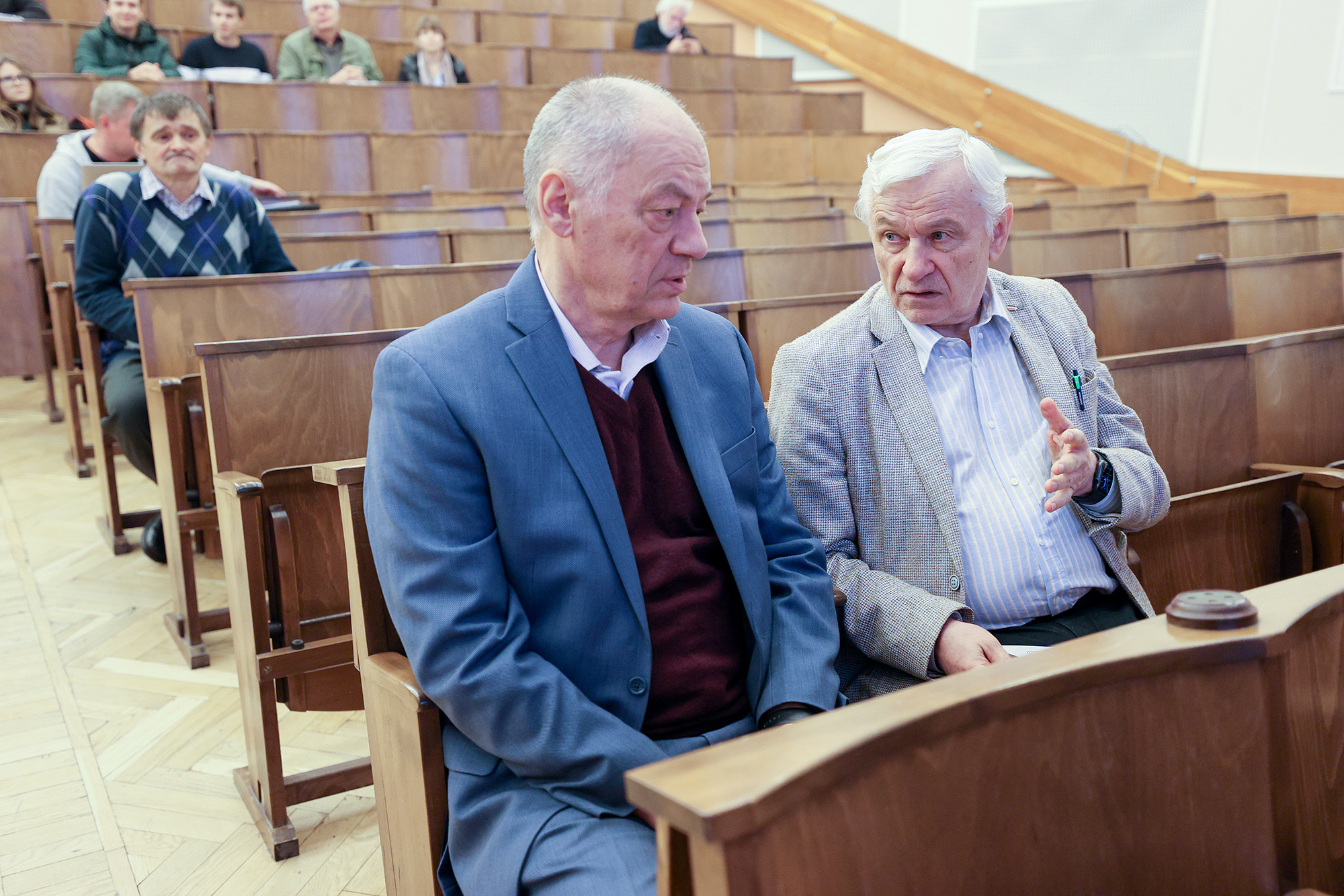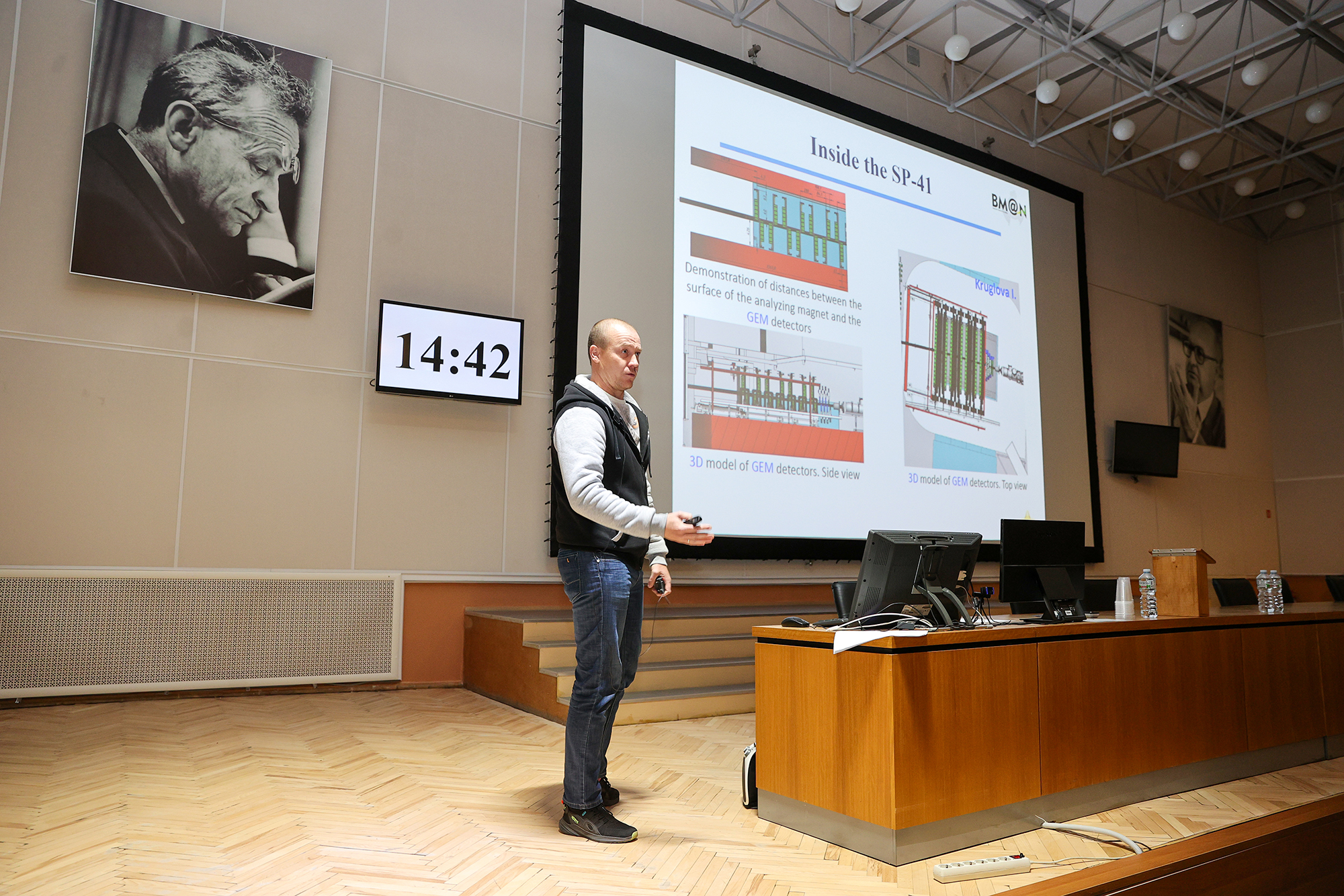9th BM@N Collaboration Meeting started
News, 13 September 2022
Today, on 13 September, the 9th Collaboration Meeting of the BM@N experiment started at the Laboratory of High Energy Physics JINR.
The BM@N (Barionic Matter at Nuclotron) experimental facility, which is a part of the NICA megascience project, is now undergoing preparations for the future heavy-ion physics programme. Participants of the BM@N collaboration will discuss plans for the next experimental runs and review the status of data analysis of strange particle and nucleus fragment production in carbon and argon beams.
The meeting has united participants from scientific centres of Russia, Bulgaria, Israel. In total, the collaboration includes 10 institutes and 184 participants.
JINR Vice-Director, Leader of the NICA project Vladimir Kekelidze greeted the audience. “The current meeting precedes a full-fledged run at the facility, when the detector has full acceptance. Before that, there have been only test runs,” he highlighted and wished participants fruitful work.
Spokesperson of the Collaboration, Head of the VBLHEP Scientific and Experimental Department of Baryonic Matter at Nuclotron, Doctor of Physics and Mathematics Mikhail Kapishin have reported on the current status of the BM@N experiment. He said that the upcoming physical experiment at the BM@N facility is planned for October – December 2022. Before the start of the physics experiment, a technical run will take several days to prove beam quality and detector response. The initial task of the run will be to trace the beam and monitor its profile at the end of the setup thus to find optimal trajectory. The irradiation run at the BM@N facility will be carried out at xenon Xe ion beams that will interact with the caesium iodide Csl at the target. It is expected to register up to 1.8∙109 interactions for the study of hyperon, meson, and nucleus fragment production. In addition, Mikhail Kapishin has presented the readiness status of major modules and detectors of the setup.
BM@N Chief Engineer, Deputy Head of the VBLHEP Scientific and Experimental Department of the Multi-Purpose Detector MPD Semen Piyadin has told the participants about the integration of detectors and modules in the facility, as well as the creation of the beam transportation channel from the Nuclotron to the BM@N experimental zone. Nuclotron Chief Engineer, Doctor of Physics and Mathematics Evgeny Syresin has devoted his today’s report to the current state of the Booster and the Nuclotron. He has also reported on the plans for the xenon beam acceleration run.
A separate meeting of the BM@N Institute’s committee has been dedicated to the organizational issues of the BM@N Collaboration. In the following days, the participants of the event are going to discuss the readiness of BM@N detectors and results of the analysis of already acquired experimental data. The agenda of the event includes also a meeting on software support of the BM@N experiment.
